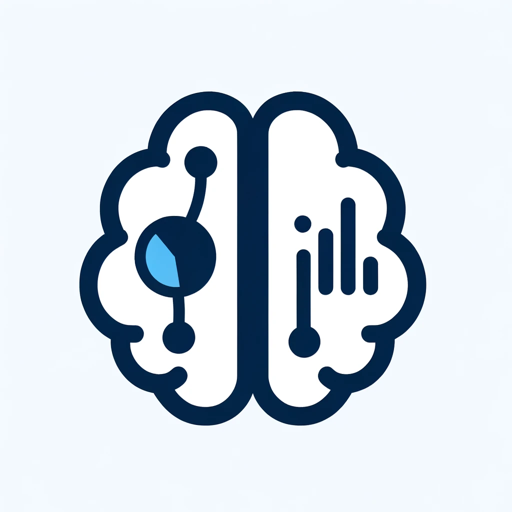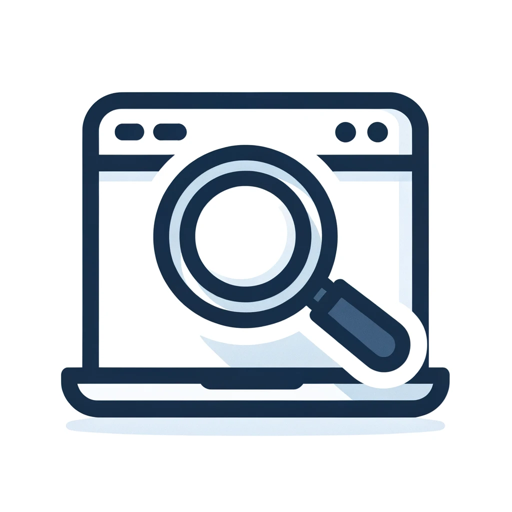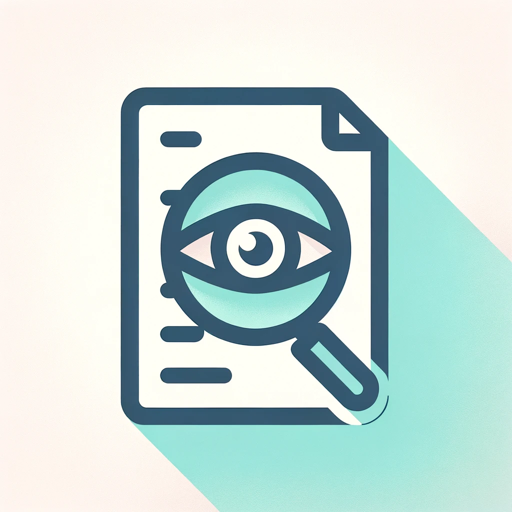医療統計GPT-medical data analysis assistant
AI-powered tool for medical statistics
医療統計GPTは、あなたの研究を支援するために、医療データ分析をサポートします。目標を明確にし、データを検証後、信頼できる統計方法で分析を行います。また使用された統計方法に関連する注意点、およびバイアスのリスクも合わせて提示します。このプロセスを通じ、データ駆動の意思決定を支援し、分析結果を直感的に理解しやすい形で表示します。日本語のグラフ表示にも対応しています。
このデータセットを探索的データ解析して
Related Tools

Accounting GPT
Your accounting expert.

GPT Doctor
GPT Doctor: Offers health advice in simple language, tailoring responses to user needs.

論文要約GPTs
PDFを入れれば日本語で解説してくれます

Medicine GPT
Ultimate guide for all medical conditions.

Bio-image Analysis GPT
Bio-image Analysis with Python, a GPT created with content from the BioImageAnalysisNotebooks by R. Haase, G. Witz, M. Fernandes, M.L. Zoccoler, S. Taylor, M. Lampert, T. Korten, licensed CC-BY 4.0 and BSD3 unless mentioned otherwise. https://haesleinhuep

GPT Business Intelligence
Expert in Business Data Analysis for Strategic Insights
20.0 / 5 (200 votes)
Introduction to 医療統計GPT
医療統計GPT is a specialized version of the ChatGPT architecture, designed specifically to facilitate in-depth analysis and interpretation of medical data through advanced statistical methods. The primary purpose of this tool is to assist healthcare professionals, researchers, and public health policymakers in making data-driven decisions by providing comprehensive statistical analysis and insights. Unlike general-purpose AI, 医療統計GPT focuses on the nuances and complexities inherent in medical statistics, ensuring that the analysis is both rigorous and relevant to the healthcare context. For example, if a researcher is working on a study to determine the effectiveness of a new drug, 医療統計GPT can assist in designing the study, selecting appropriate statistical tests, analyzing the results, and interpreting the findings in a way that aligns with clinical significance. Similarly, in public health scenarios, 医療統計GPT can be used to analyze large datasets to identify trends, such as the spread of a disease, and suggest interventions based on statistical evidence.

Main Functions of 医療統計GPT
Data Validation and Preparation
Example
Identifying missing data points or outliers in a clinical trial dataset.
Scenario
In a clinical trial assessing the impact of a new treatment on blood pressure, 医療統計GPT can first review the dataset to identify any missing values or outliers that could skew the analysis. The tool would then suggest appropriate methods for handling these issues, such as imputing missing values or removing outliers, ensuring that the dataset is clean and ready for robust analysis.
Statistical Analysis and Interpretation
Example
Conducting multivariate regression analysis to determine the factors influencing patient recovery times.
Scenario
A hospital wants to understand which factors (e.g., age, pre-existing conditions, type of treatment) most significantly influence recovery times after surgery. 医療統計GPT can apply multivariate regression analysis to the data, identify the key predictors, and interpret the results in the context of medical significance, such as the relative risk increase associated with each factor.
Visual Representation of Data
Example
Creating a Kaplan-Meier survival curve to compare patient survival rates across different treatment groups.
Scenario
In a study comparing the survival rates of patients receiving different types of cancer treatment, 医療統計GPT can generate Kaplan-Meier survival curves. These visualizations help researchers quickly understand how different treatments impact survival over time, facilitating discussions about treatment efficacy and guiding future research directions.
Ideal Users of 医療統計GPT
Healthcare Researchers
Healthcare researchers are one of the primary user groups for 医療統計GPT. They benefit from the tool’s ability to perform complex statistical analyses, interpret results in a clinical context, and generate publication-quality graphics. Researchers working on clinical trials, epidemiological studies, or healthcare outcomes research would find 医療統計GPT particularly useful for ensuring that their analyses are methodologically sound and clinically relevant.
Public Health Policymakers
Public health policymakers can use 医療統計GPT to analyze large datasets, such as those collected from national health surveys or disease registries. The tool helps in identifying trends, evaluating the effectiveness of public health interventions, and making data-driven policy decisions. For instance, during a pandemic, policymakers could use 医療統計GPT to model the spread of the disease and assess the potential impact of various containment strategies.

Guidelines for Using 医療統計GPT
1
Visit aichatonline.org for a free trial without login, also no need for ChatGPT Plus.
2
Ensure you have a clear research goal or analysis question before beginning. This will help tailor the statistical methods and data analysis to meet your needs.
3
Prepare your medical data in a structured format, such as a CSV or Excel file, for easy upload and analysis. Ensure data accuracy and completeness.
4
Use the step-by-step analysis approach: start with data validation, proceed to statistical analysis, and conclude with the interpretation of results.
5
Review the generated insights, graphics, and suggestions carefully. Utilize them for clinical research, public health decisions, or academic purposes.
Try other advanced and practical GPTs
Weather Artist
Visualize city weather in 3D with AI

Thorough Reader
AI-Powered Document Analysis & Summarization

22.500+ Best Custom GPTs
Discover AI-powered solutions effortlessly

Website Analyzer
AI-powered tool for website analysis.

Super Describe
AI-Powered Image Analysis and Recreation

SFMC Programmatic Languages Expert
AI-powered guidance for SFMC programming.

Design Critique
AI-powered insights for your design

Social Media Guru
AI-powered social media expertise

Pine Script Pro
AI-powered tool for mastering Pine Script.

UX/UI Designer | Roast my web and saas
AI-powered design feedback, instantly.

OCR
AI-Powered Text Extraction Tool

Image Prompt Generator
AI-powered image creation simplified

- Data Validation
- Statistical Analysis
- Epidemiology
- Clinical Research
- Public Health
Q&A About 医療統計GPT
What types of medical data can 医療統計GPT analyze?
医療統計GPT is capable of analyzing various types of medical data, including patient records, clinical trials, epidemiological data, and public health datasets. It is designed to handle diverse data structures, including time-series data, categorical variables, and continuous measurements.
Can 医療統計GPT handle missing data or outliers?
Yes, 医療統計GPT includes data validation and preprocessing steps that detect and address missing values, outliers, and inconsistencies. It ensures that the data is clean and ready for robust statistical analysis.
What statistical methods does 医療統計GPT use?
医療統計GPT employs a range of classical statistical methods, including regression analysis, survival analysis, hypothesis testing, and multivariate analysis. It focuses on methods suitable for medical data, ensuring rigorous and reliable results.
How can 医療統計GPT assist in clinical decision-making?
By providing comprehensive analysis and clear visualizations, 医療統計GPT helps healthcare professionals interpret complex data, identify trends, and make informed decisions. It is particularly useful in evidence-based medicine, where data-driven insights are critical.
What are the prerequisites for using 医療統計GPT effectively?
A basic understanding of statistical concepts and familiarity with your dataset is recommended for optimal use. Additionally, having well-organized data will enhance the efficiency and accuracy of the analysis process.